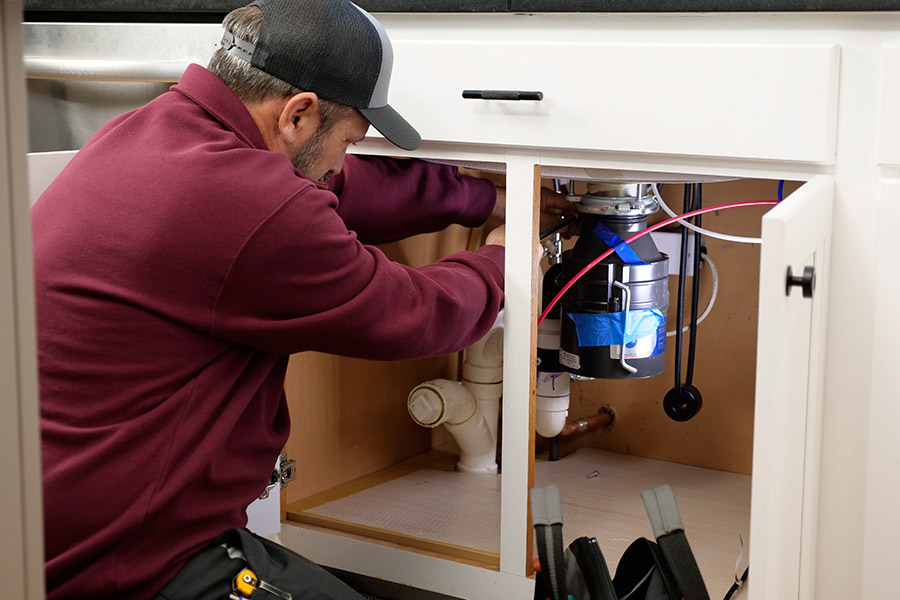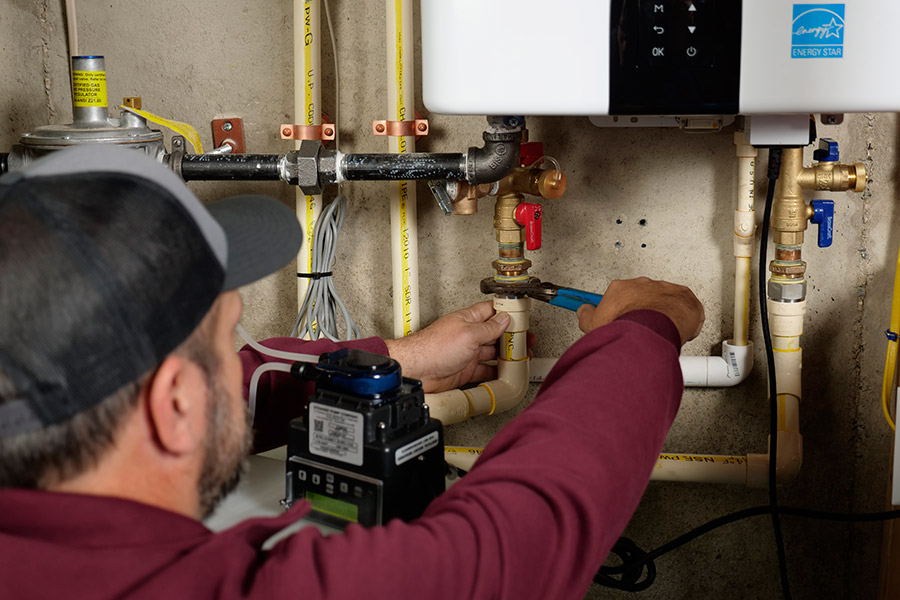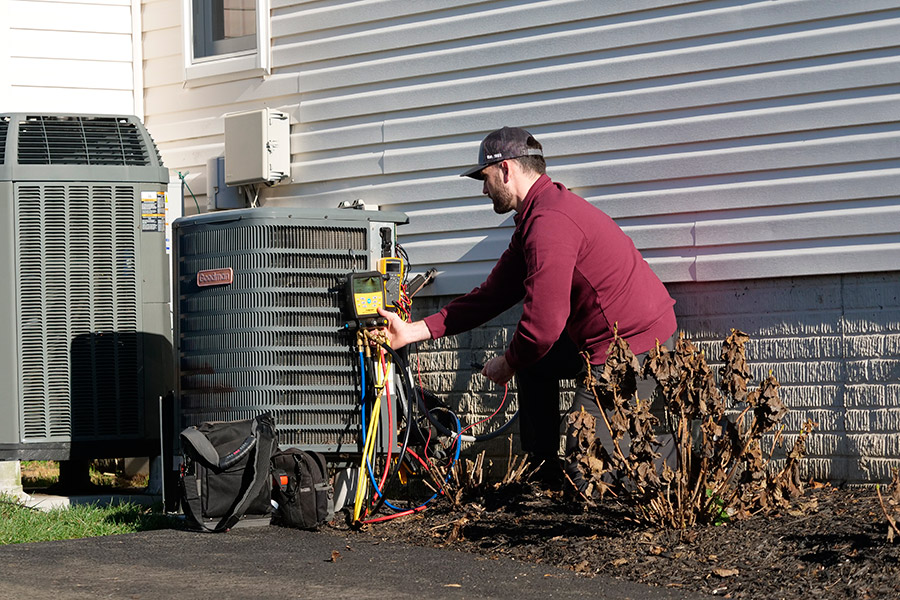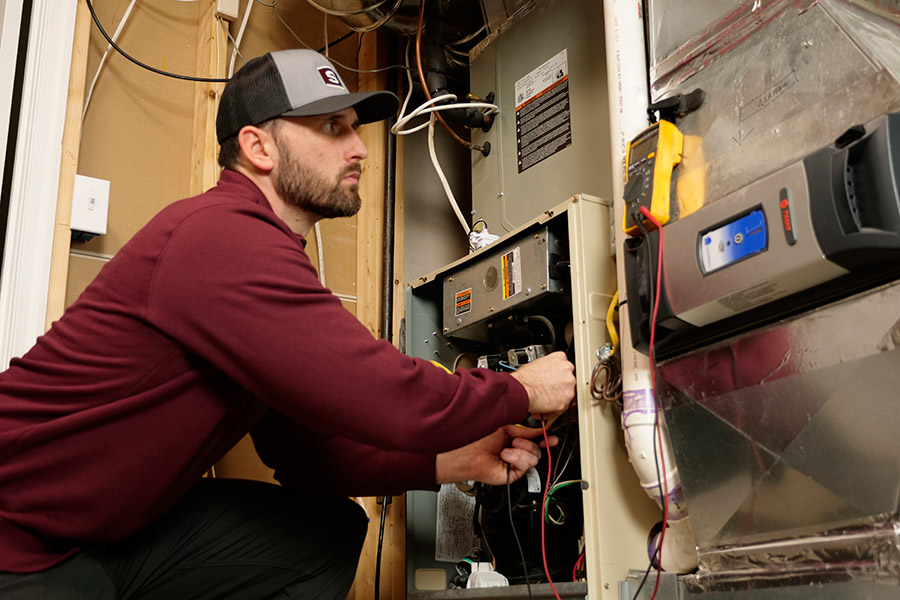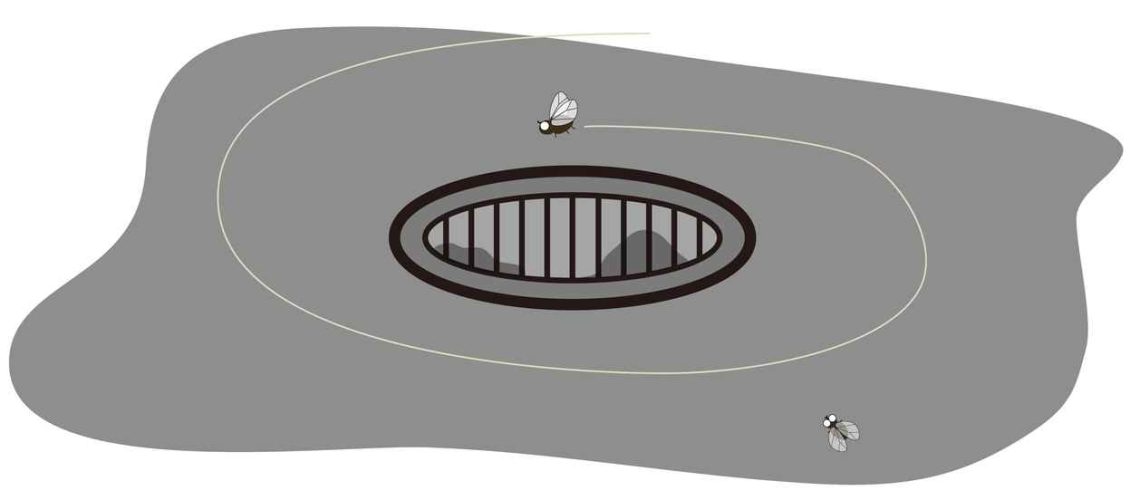Fruit flies can be an infuriating presence in our homes, seemingly appearing out of nowhere and hovering around our ripest produce. While these tiny pests can be found congregating around fruit bowls and compost bins, they often have a secret hideout that’s less visible but just as problematic: your kitchen drain. If you’ve ever wondered, “How do I get rid of fruit flies in my drain?” you’re not alone.
In this blog, W.L. Staton Plumbing, Heating and Cooling will dive into the world of these pesky insects and explore effective methods to banish them from your kitchen for good. Say goodbye to those bothersome fruit fly infestations and regain control of your clean and fruit-fly-free space.
What Are Fruit Flies?
Fruit flies, scientifically known as Drosophila melanogaster, are small insects that belong to the family Drosophilidae. These flies are commonly found in and around homes, particularly in kitchens and near areas where fruits and vegetables are stored. Fruit flies are known for their tiny size, typically measuring only about 1/8 inch (3-4 millimeters) in length, and their distinctive appearance, which includes a tan to light brown body and bright red eyes.
Fruit flies are attracted to overripe or decaying fruits and vegetables, as well as fermented substances like wine, beer, and vinegar. They lay their eggs on these organic materials, and the larvae (maggots) that hatch from the eggs feed on the decaying matter. This life cycle can result in rapid population growth, making fruit flies a common nuisance in homes, especially during the warmer months.
Why do Fruit Flies Get in My Drain?
Fruit flies are often found in drains because drains provide an ideal breeding ground for them. There are a few reasons why fruit flies are attracted to drains:
- Decomposing Organic Matter: Drains, particularly in kitchen sinks, often accumulate small bits of organic matter, such as food particles, grease, and residue. This decomposing organic material provides an attractive food source for fruit fly larvae (maggots).
- Moisture: Fruit fly eggs and larvae require a moist environment to develop. Drains are usually damp, which creates a suitable habitat for fruit fly eggs to hatch and for the immature stages of fruit flies to thrive.
- Odors: The decaying matter in drains emits odors that can attract fruit flies. These insects have a keen sense of smell and can detect the scent of rotting food and organic material.
- Easy Entry: Fruit flies are tiny and can easily enter homes through small cracks and openings. Once they’re inside, they are naturally drawn to the food-rich environment near sinks and drains.
What Can I Pour Down the Drain to Get Rid of Fruit Flies?
To get rid of fruit flies in your drain, you can use a variety of household items and solutions. Here are some effective options:
Boiling Water
Pouring a pot of boiling water down the drain can help dislodge and wash away organic matter that attracts fruit flies. Repeat this regularly to keep the drain clean.
Vinegar and Baking Soda
Create a foaming mixture by pouring a cup of baking soda down the drain, followed by a cup of vinegar. Let it sit for about 15 minutes to break down and eliminate organic buildup, then flush with hot water.
Drain Cleaner
Commercial drain cleaners can be effective in removing clogs and buildup that may be harboring fruit fly larvae. Follow the product’s instructions carefully.
Bleach Solution
A solution of one part bleach to ten parts water can help sanitize the drain and eliminate any organic matter. Pour it down the drain, let it sit for a while, and then rinse with water.
Boiling Salt Water
Boil a mixture of salt and water and pour it down the drain to kill fruit fly larvae and dislodge debris. This method can be effective when done regularly.
5 Ways to Get Rid of Fruit Flies for Good
Getting rid of drain flies for good can be a bit of a challenge, but with consistent effort and the right approach, it’s certainly achievable. Here are five effective ways to eliminate drain flies:
Clean Your Drains Thoroughly
- Start by removing any visible debris or gunk from your drains using a drain brush or pipe cleaner.
- Next, pour a mixture of 1/2 cup baking soda followed by 1/2 cup white vinegar down the drain. Let it sit for 15 minutes to create a foaming action that helps break down organic matter. Then, flush with hot water.
- For a more aggressive approach, use a drain cleaner specifically designed to eliminate organic buildup and drain flies. Follow the product’s instructions carefully.
Boil Water and Salt Treatment
- Boil a pot of water and add a handful of salt to it. Stir until the salt is dissolved.
- Pour this boiling saltwater mixture down the drain. The heat and salt will help kill drain fly larvae and eggs.
Use Drain Gel
- Drain gels or gelatin-based drain treatments are designed to coat the inside of your drains, making it difficult for drain fly larvae to adhere to the pipe walls.
- Follow the product’s instructions for application and reapplication to ensure long-term effectiveness.
Maintain Good Drain Hygiene
- Regularly clean your drains by flushing them with hot water and a small amount of bleach or vinegar to prevent organic matter buildup.
- Keep sink strainers and drain covers in place to prevent food particles and debris from entering the drain.
Fix Any Leaks or Moisture Issues
- Drain flies are attracted to moisture, so addressing any leaks or damp areas near your drains can help prevent their attraction.
- Ensure that your plumbing is in good condition and that there are no standing water sources or damp spots around your sinks.
Drain Cleaning Services in Maryland
From tackling stubborn clogs to ensuring your drains are free from lurking pests like fruit flies, W.L. Staton Plumbing, Heating and Cooling always goes the extra mile to provide efficient and effective solutions. So, if you find yourself facing drain-related issues in Maryland, don’t hesitate to reach out to our team.

